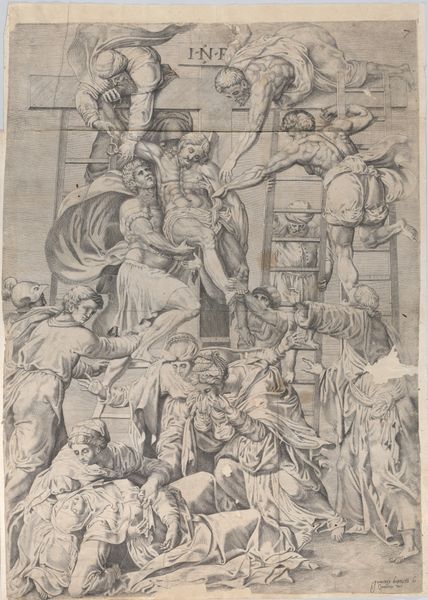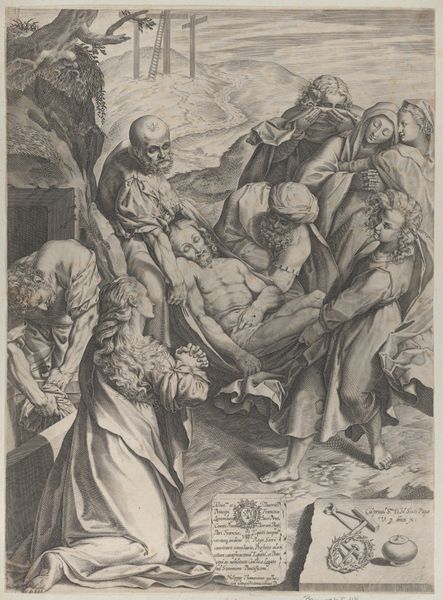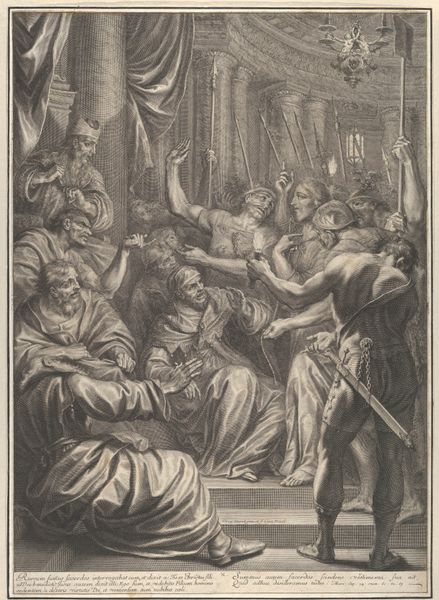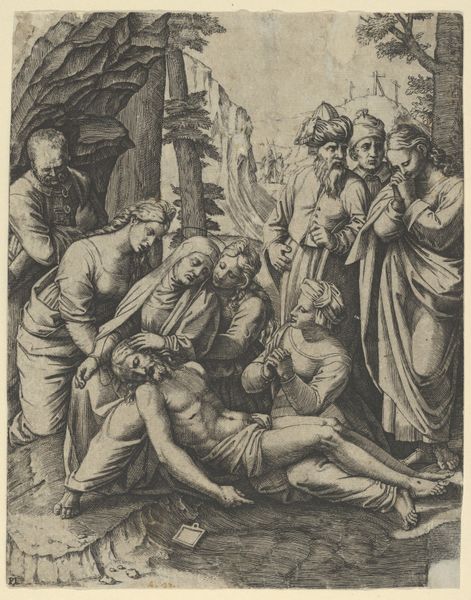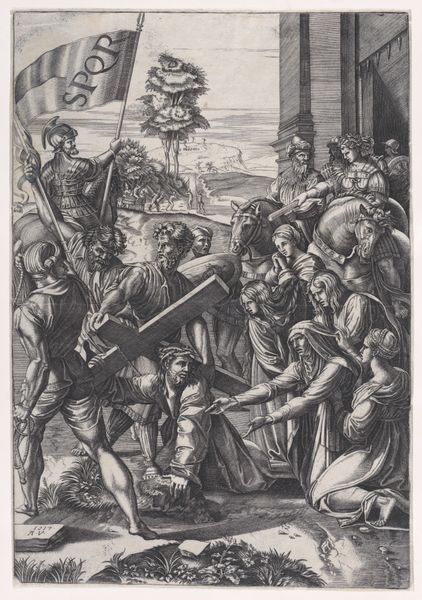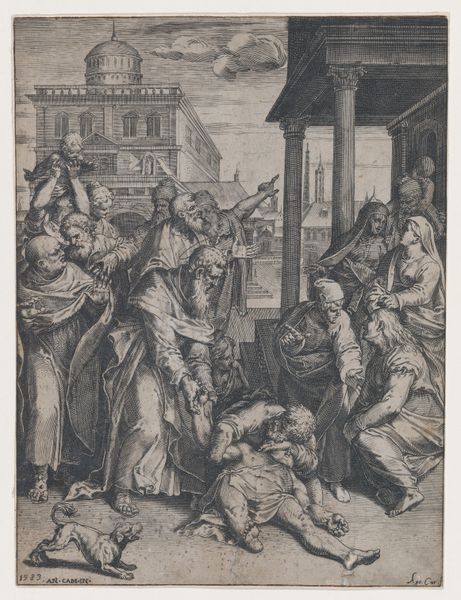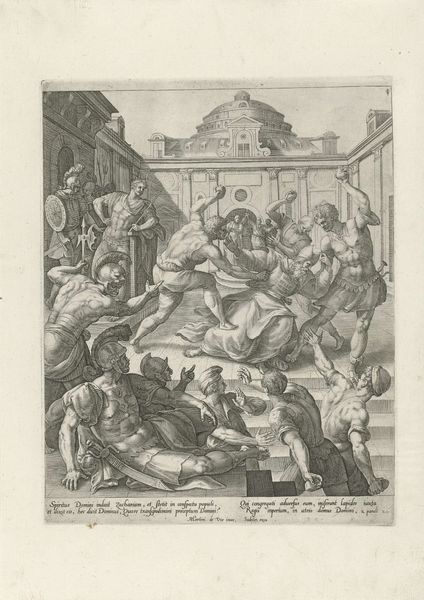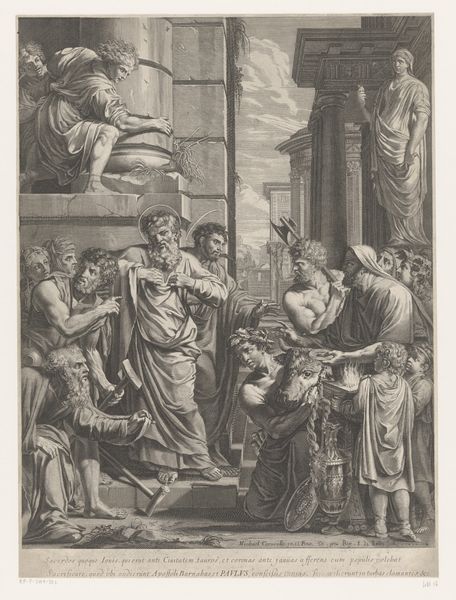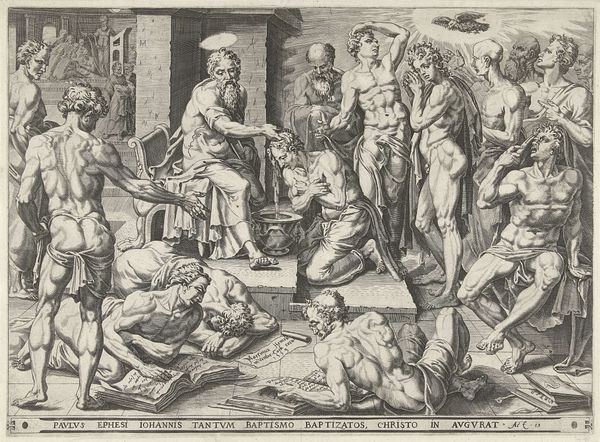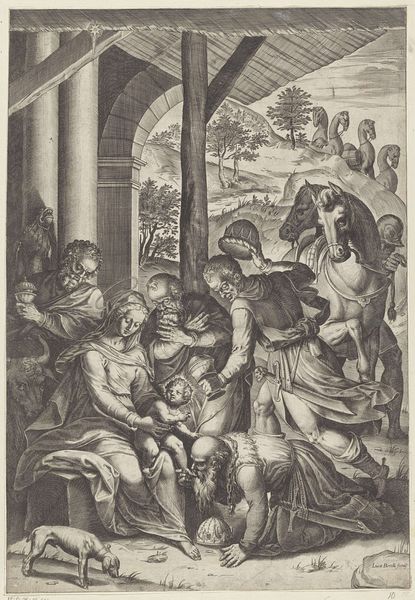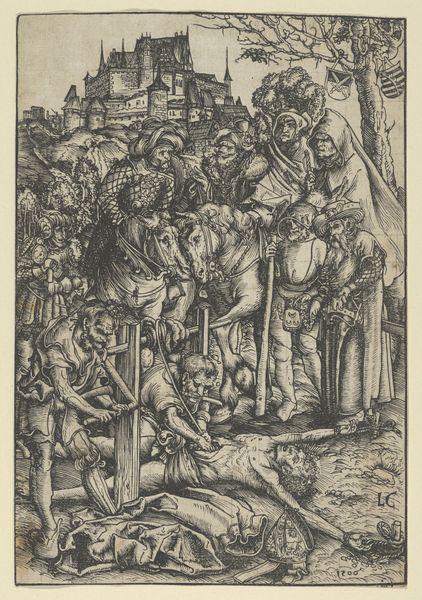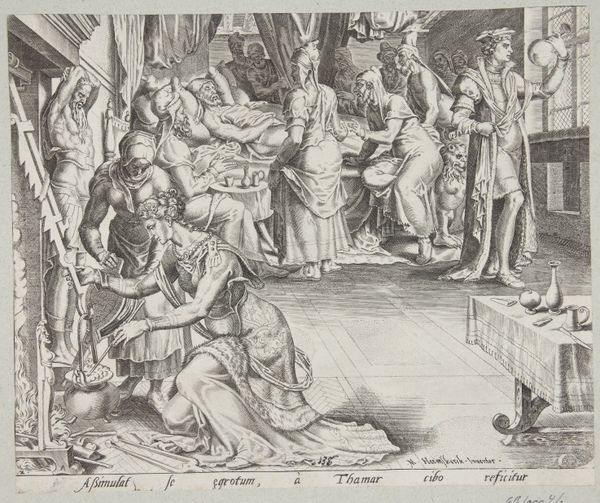
engraving
#
baroque
#
figuration
#
history-painting
#
engraving
Dimensions: height 504 mm, width 377 mm
Copyright: Rijks Museum: Open Domain
Editor: We’re standing in front of "The Martyrdom of St. Erasmus," an engraving made sometime between 1615 and 1647. It's quite a disturbing image. The Baroque style is intense. There’s a wheel, implements of torture, and lots of onlookers. What catches your eye in this particularly gruesome scene? Curator: Oh, darling, where to even begin with this Baroque brilliance, hmm? It's a symphony of suffering, wouldn't you say? But look closer, beyond the obvious torment. See how the artist, Jerome David, uses light and shadow? The way Erasmus is positioned almost theatrically? For me, it is less about literal history, but a meditation on faith and spectacle, how we perform and consume narratives of pain. Don't you think? Editor: I see what you mean. It’s like stagecraft. So, are you saying the gruesomeness is almost secondary to the overall *presentation* of martyrdom? Curator: Exactly! The engraving allows this to circulate, reaching all corners of the republic. It’s not just about the event itself but the *idea* of it, how it’s framed. The theatrics enhance the spiritual message. I mean, isn’t faith itself, in some ways, a grand performance? The elaborate staging screams Baroque to me, and speaks to how eager audiences were to engage in such images during this period. Editor: That’s a completely different way to look at it than I initially thought. Curator: Oh, my dear, that's the joy of art, isn't it? Shifting perspectives. Editor: Definitely gives me a lot to think about regarding how visual stories influence faith and beliefs. Thanks!
Comments
No comments
Be the first to comment and join the conversation on the ultimate creative platform.

